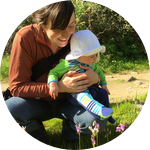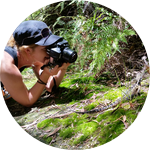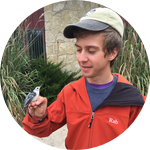About This Project
Blood parasites can have devastating effects on bird populations, and climate change is expected to increase exposure of naïve populations to infection by altering the distribution, composition, and social ecology of bird communities. Yet we lack a complete understanding of how social behavior influences infection risk. I will assess malarial infection in a socially-diverse avian community to test whether a host's disease risk relates to its social behavior in conspecific and community contexts.
Ask the Scientists
Join The DiscussionWhat is the context of this research?
Studies of bird communities and their associated blood parasites have helped to broaden our understanding of how host behavior, habitat, ecology, and life history relate to disease transmission and the risk of infection. Researchers have found evidence of different levels of risk between resident and migratory bird species, between solitary species and those that form flocks, and between species that form social breeding groups and those breeding in pairs. Yet our understanding of the effects of host traits—particularly those related to social behavior—on infection risk remains limited, though infectious diseases are closely linked to host social systems. This project will improve our understanding of how patterns of infection in a community relate to its social structure.
What is the significance of this project?
Associations between species in a community are often non-random and heterogeneous. This social structure and heterogeneity has important implications for parasite transmission, and is likely a key factor shaping transmission dynamics in natural systems. But comparisons across a range of host social behaviors frequently involve generalizations about species' sociality, overlooking differences in contact patterns. This study will use direct observations of contacts in a socially-diverse avian community to characterize interactions between birds. This high-resolution social data will then be used to construct social network models and evaluate the relationships between a species' infection risk and the number and nature of its social encounters.
What are the goals of the project?
I will record individual- and species-level interactions in the avian community at Brookfield Conservation Park, South Australia. This work will be done during the breeding and pre-breeding season (Aug–Dec, 2019) in collaboration with researchers conducting a long-term study of avian community ecology. I will also collect blood samples from the observed birds, testing for infection by three types of avian blood parasites. Collecting concurrent blood samples and behavioral data will permit me to address questions about how social behavior relates to the risk of infection. I plan to sample 125 each of fairywrens (Malurus spp), thornbills (Acanthiza spp and Smicrornis sp), pardalotes (Pardalotus spp), and robins (Petroica sp), allowing me to capture a range of flocking and social behaviors.
Budget
The budget covers round-trip travel and accommodation at a biological field station in the Mid-Murray region of South Australia where I'll be collecting blood samples and recording social behaviors and interactions between birds. The Australian avifauna exhibits a high diversity of social behaviors that is well-represented at the study site and that creates an ideal environment for testing predictions about the effects of social behaviors and ecology on the risk of infection. Working at this site will allow me to collaborate with other researchers at my institution who will be continuing a long-term study of community ecology there.
Your contribution will also support the cost of the materials needed to run diagnostic tests on the blood samples I collect. I'll be using a multiplex PCR method to test each sample for three types of parasites in a single run. Diagnostic tests will be completed in Nebraska to take advantage of existing equipment and partnerships at my home institution.
Endorsed by
 Project Timeline
Project Timeline
In August 2019, I will begin collecting blood samples and conducting behavioral observations. After returning from the field in December 2019, I will perform parasite diagnostic assays on the blood samples. I will analyze the field and lab data through mid-2020, and prepare findings for publication by early 2021.
Jun 03, 2019
Project Launched
Aug 21, 2019
Arrive at Brookfield Conservation Park, South Australia
Dec 20, 2019
Complete bird trapping, sampling, and behavioral observations; return to Nebraska
Jan 13, 2020
Begin testing blood samples
Mar 16, 2020
Complete laboratory analyses
Meet the Team
Ian Hoppe
How do environment and behavior relate to an individual's risk of infection? And how does infection influence behavior? Questions like these have ignited my curiosity and set me on an exciting journey of discovery. In my research, I'm particularly compelled to understand the forces shaping complex transmission dynamics in multi-host, multi-pathogen systems. I think that a better understanding of these systems is especially important when the insights gleaned from gaining such an understanding might have implications for wildlife conservation or human and animal health.
An incorrigible nerd, I get excited by the development and application of spatial models and network mapping to questions related to disease ecology. Quantitative tools like these have the potential to vastly improve our understanding of complex systems in nature, and to inform conservation and health management decisions.
Although I enjoy the challenge of a good statistical analysis problem, I will always feel most at home in the field. The field is where I do my best thinking, and it was in the field that I got my first taste of research in wildlife ecology. It's an adventure that has taken me from the sandy banks of the Platte River in the Great Plains of North America to the arid mallee of Australia and the swampy lowlands of Papua New Guinea. I've had the good fortune to work with a lot of really great people, and I’ve learned so much about social ecology, animal communication, and the importance of conservation to maintaining a healthy planet.
Additional Information
Transporting biological samples across international borders is a complicated process, and for good reason. The regulations put in place by state and federal authorities help to prevent illegal trafficking in wildlife and wildlife products, and also protect animals and people by preventing the spread of pathogens. But importing samples into the United States for testing will help me to limit expenses by conducting diagnostic tests in-house, and will ensure that any un-used portions of the samples can be archived for later research. Together with my colleagues at the University of Nebraska, I have initiated the process of renewing our import and export permits from the U.S. Fish and Wildlife Service and the Australian Department of the Environment and Energy.
In addition, my research methods and sampling protocols have been approved by the Institutional Animal Care and Use Committee (IACUC) at the University of Nebraska–Lincoln and by the government of South Australia (Department for Environment and Water, Wildlife Ethics Committee).
Project Backers
- 51Backers
- 100%Funded
- $6,051Total Donations
- $118.65Average Donation


